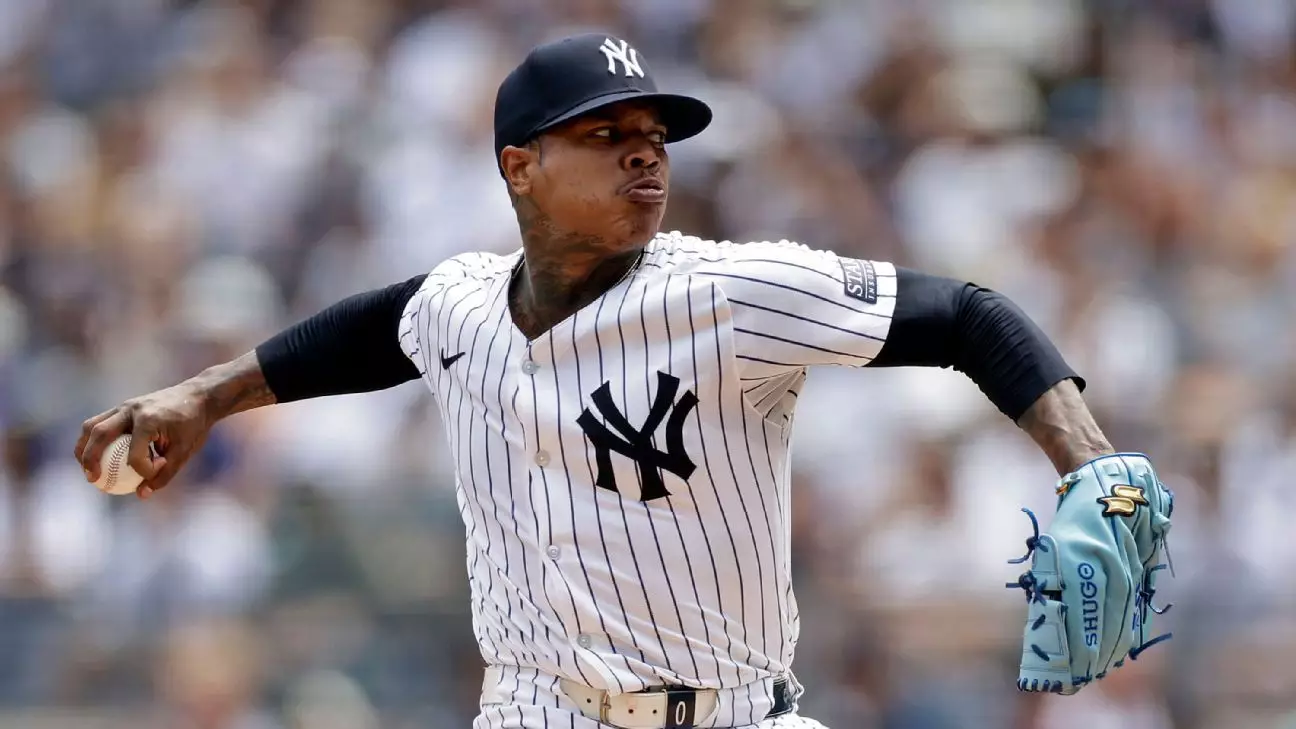When the New York Yankees inked Marcus Stroman to a two-year, $37 million deal, the expectation was that they were securing a reliable veteran capable of bolstering their starting rotation. However, the reality proved starkly different. The signing, once viewed as a strategic reinforcement, ultimately became a costly miscalculation. Stroman’s performance fell far short of expectations — a mere 6.23 ERA across nine starts, with an overall record of 3-2, reflects an underwhelming stint marred by inconsistency and missed opportunities.
Judging from the outset, the Yankees misjudged both Stroman’s durability and his ability to adapt to the team’s environment. Instead of being a stabilizing presence, he became a symbol of misplaced confidence. It’s evident that the Yankees overestimated his capacity to deliver meaningful innings, failing to recognize that his prior performances and injury history should have prompted cautious optimism at best. Their reckless gamble to acquire Stroman for over $18 million this season exemplifies a broader issue of overextension by a franchise that often seeks quick fixes over sustainable long-term planning.
Injury Woes and a Disjointed Role
Stroman’s tenure was plagued by injuries from the start. An initial knee injury sidelined him for more than two months, severely disrupting any rhythm he hoped to establish. When he returned, he consistently struggled to showcase the dominance necessary for a team eager to contend in October. His fluctuating form reflected not only physical issues but also a mental toll that often comes with failing to meet lofty expectations in New York’s unforgiving media landscape.
The Yankees’ decision to keep Stroman in their rotation, despite his struggles, seemed rooted more in desperation than conviction. The team’s internal narrative shifted swiftly once younger arms like Luis Gil and rookie Cam Schlittler impressed management in limited opportunities. Stroman’s final appearances further highlighted his inability to find consistency; conceding four runs over five innings against the Rays underscored his limited effectiveness. It’s tempting to blame only the player’s performance, but the broader context reveals a lack of strategic foresight by the Yankees’ management, who failed to recognize when to cut their losses and move on.
The Decision to Release and the Cost of Misjudgment
Ultimately, Stroman’s release was a pragmatic, if grudging, move by the Yankees—a recognition that his contribution no longer justified the roster spot or the ongoing financial burden. Their willingness to eat the remaining $18 million of his salary is telling; it demonstrates a pragmatic approach to avoid further deterioration of team chemistry and to open space for other contributors. The Yankees’ roster additions at the trade deadline, including talented relievers and utility players, highlight their strategic shift toward a more dynamic, flexible squad.
Notably, Stroman’s departure exposes systemic issues within the Yankees’ talent assessment and roster management. Rather than building a cohesive, sustainable rotation, the team’s decision-making appeared reactive, often driven by immediate needs rather than long-term planning. Buying in on a veteran like Stroman, only to discard him after a disappointing season, underscores a broader pattern of overpaying for short-term fixes instead of cultivating homegrown talent or exploring more measured acquisitions.
Looking Beyond the Bronx: A Player at a Crossroads
For Stroman, the future is now an open question. At 34, he still possesses the talent to contribute, but his recent struggles cast doubt on his ability to reclaim a rotation spot on a competitive team. His brief stint with the Yankees serves as a cautionary tale—an illustration of how high hopes can be dashed by injuries, inconsistency, and perhaps misaligned expectations.
His next move will be critical. Will another organization see a veteran with over a decade of experience and the potential to provide depth? Or will Stroman face the harsh reality of bouncing between teams, relegated to a minimum-salary contract for a backup role? The lesson from his Yankees chapter suggests that even talented pitchers must navigate the treacherous waters of expectations, injuries, and strategic fit. The hope remains that Stroman can leverage his experience to find a team that values durability and consistency—qualities that eluded him in New York.
In the grand scheme, Stroman’s journey highlights the peril of overconfidence and the perils of overestimating a veteran’s ability to adapt in a high-pressure environment. While his career still holds potential, the Yankees’ misjudgment underscores a broader truth: that mistakes in roster building can be costly, and acknowledging failure is sometimes the first step toward future resilience.


Leave a Reply